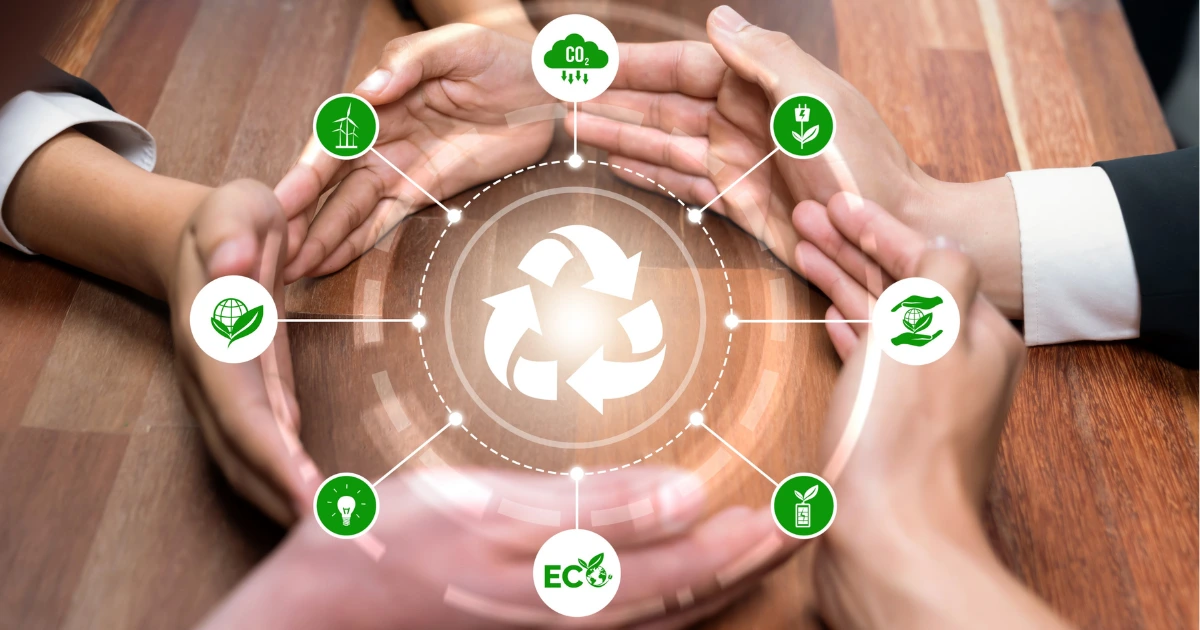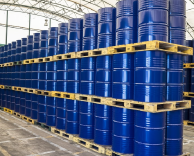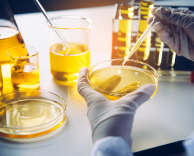Understanding the Circular Economy: Origins, Principles, 4Rs, and Minimac Role in Sustainability
Introduction to the Circular Economy
In the race toward achieving Net Zero emissions, industries are under increasing pressure to reduce their environmental footprint. While the lubrication industry contributes less than 0.1% to carbon emissions, it still plays a crucial role in sustainability due to the large volumes of lubricants produced, used, and discarded annually.
Globally, lubricant production and consumption are closely matched, with an estimated 35 to 44 million metric tonnes processed each year across automotive, industrial, and other sectors. This massive scale highlights the environmental challenges associated with disposing of used oil and the opportunity for significant change.
In India, NITI Aayog, the government's premier policy think tank, has committed to achieving net-zero carbon emissions by 2070. Its roadmap includes major targets for 2030, such as reducing carbon emissions by 1 billion tonnes, cutting carbon intensity by 45% (compared to 2005 levels), and achieving 50% electric power capacity from non-fossil sources.
Through multi-sectoral committees and initiatives, NITI Aayog is driving decarbonization in high-impact sectors like steel, cement, and transport. The lubricant sector, though a smaller emitter, aligns closely with these national goals through sustainability and innovation.
This calls for a shift from the traditional linear "take-make-dispose" model to a Circular Economy approach. In the lubrication industry, this means prolonging the life of lubricants, minimizing waste, and reducing dependency on virgin base oils through reconditioning, recycling, and reuse.
This article explores the origins of the Circular Economy, its core principles, the 4Rs framework (Reduce, Reuse, Recycle, Recover), and how Minimac Systems is playing a pioneering role in advancing circularity in lubrication.

What is a Circular Economy?
A circular economy is a concept aimed at minimizing waste and making the most out of available resources. It focuses on reusing, recycling, and remanufacturing products and materials so that they stay in circulation for as long as possible.
Instead of following a one-way path where products are used and thrown away, a circular economy keeps resources in use by creating a closed-loop system. In this system, materials are reused or recycled into new products rather than ending up in landfills.
Key Features of Circular Economy:
- Minimizing waste: Reducing the amount of waste produced during production and consumption.
- Sustainability: Using resources in a way that doesn't deplete them.
- Economic benefits: Creating new economic opportunities by reusing materials and reducing costs.
In short, the circular economy is about doing more with less while protecting the environment and contributing to long-term economic growth.
The Origins of the Circular Economy Concept
The idea of a circular economy isn't entirely new, though its global adoption has surged recently. The roots of this concept trace back to several important figures and movements:
1. Walter Stahel (1970s)
Swiss architect Walter Stahel is one of the earliest proponents of the circular economy. He proposed a model where products would be used for longer periods and their materials reused to minimize waste.
2. Cradle-to-Cradle Design (2002)
William McDonough and Michael Braungart introduced the concept of Cradle-to-Cradle design, which emphasized designing products that could be endlessly recycled and reused without losing their value. This was a significant shift away from the traditional "cradle-to-grave" model of production.
3. Ellen MacArthur Foundation (2010)
Perhaps the most influential organization in popularizing the circular economy is the Ellen MacArthur Foundation, which began its work in 2010. The foundation's efforts have been instrumental in spreading circular economy principles to businesses, governments, and educational institutions around the world.
The circular economy was built on the idea that nature itself is a perfect model, where resources are continuously cycled, and waste is non-existent.
Understanding Nano, Micro, and Macro Circular Economy
1. Nano Circularity ™ – Mid-Life Treatment of Oil
Nano Circularity focuses on actions at the smallest, operational level within machines and systems. The goal is to extend the life of the lubricant through better maintenance, monitoring, and contamination control.
By implementing oil analysis, filtration, and clean storage practices:
- Lubricants last longer
- Oil change intervals increase
- Fewer new oil purchases are needed
This means less environmental impact and cost savings for industries. It's about delaying the end-of-life of lubricants and maximizing every drop used. Nano Circularity is often the first step toward a sustainable lubrication model.
2. Micro Circularity ™ – End-of-Life Treatment of Oil
Micro Circularity takes it a step further. Instead of just extending oil life, it restores used lubricants to near-original performance levels through advanced reconditioning technologies such as dehydration, filtration, and chemical treatment.
This eliminates the need to replace the oil completely and enables multiple reuse cycles within the same equipment or operation.
Key benefits:
- Zero oil drain systems become possible
- Lower dependency on fresh oil
- Reduced lubricant waste
Micro Circularity is the future of lubrication, allowing for closed-loop oil management within facilities driving down both environmental footprint and operational costs.
3. Macro Circularity ™ – Waste Oil Collection and Recycling
At the Macro level, circularity addresses the entire lubricant ecosystem—from collection to re-refining and responsible disposal. Today, over 85% of used oil globally is either incinerated or improperly discarded, posing major environmental threats.
However, Macro Circularity promotes:
- Efficient used oil collection systems
- Investment in re-refining infrastructure
- Collaborative policies across industries and governments
Currently, only about 40% to 50% of used lubricants are re-refined into base oil. The opportunity to scale this percentage is massive and crucial. Macro Circularity is about building a regenerative industry where waste becomes a valuable input, not an endpoint.
For more information about how Minimac supports ESG initiatives, click here.
The 4Rs of Circular Economy
The core principles of the circular economy are captured by the 4Rs: Reform, Reduce, Reuse, and Recycle. These four strategies help to ensure that materials are used wisely and waste is minimized.
1. Reform
Reform is about changing the mindset and behavior of lubricant users and producers. It means rethinking old habits, such as throwing away used oil and embracing sustainable practices like reconditioning and lifecycle management.
A company trains its maintenance team to monitor oil health and use reconditioning equipment instead of replacing oil early. It also adopts green procurement policies and invests in Total Lubrication Management Systems.
Actions involved:
- Awareness and training programs
- Policy changes and circular procurement
- Promoting lifecycle-based oil management
2. Reduce
This is the first and most important step in the circular economy. It focuses on using fewer resources, minimizing waste, and improving efficiency during the product's active life.
In the lubrication industry, this means extending the life of lubricants through contamination control, reducing the need for frequent oil changes.
An industrial plant installs advanced filtration and dehydration systems to clean lubricating oil while it's still in use. This reduces the number of oil replacements, lowers fresh oil demand, and minimizes oil disposal.
Techniques used:
- Mechanical filtration
- Moisture removal (vacuum dehydration, coalescers)
- Real-time oil monitoring systems
3. Reuse
Reuse means extending the life of products by using them again after minor restoration or reconditioning. Instead of discarding used oil, it is treated chemically to remove harmful elements and then returned to service.
Example:
A power plant uses ion exchange technology to remove acids, varnish, and sludge from degraded turbine oil. The reclaimed oil is then reused for several hundred more operating hours, reducing the need to purchase new oil.
Techniques used:
- Ion Exchange Resins
- Acid/Sludge neutralization
- End-of-life oil treatment systems
4. Recycle
Recycling involves transforming waste materials into reusable raw materials. In lubrication, fully degraded oil that can't be reused is collected, treated, and converted into Re-Refined Base Oil (RRBO).
Example:
A lubricant distributor collects used oil from industries and sends it to a re-refining plant, where it is processed into RRBO. This base oil is then used to manufacture new lubricants, reducing dependence on crude oil.
Technologies used:
- Re-refining plants
- Collection and segregation systems
- RRBO production processes
Minimac Systems in the Nano Circular Economy
Minimac Systems is deeply involved in the circular economy at the nano level and macro level. Their focus is on sustainable oil management, specifically through:
- Oil Filtration: Minimac's filtration systems clean and purify used oils, extending their lifecycle and reducing the need for new oils.
- Oil Reclamation: Minimac's technology helps industries reclaim and reuse oils, reducing waste and conserving valuable resources.
- Condition-Based Maintenance: By using smart sensors to monitor oil quality, Minimac helps companies reduce oil waste and extend the life of their machinery.
These efforts align with India's Net Zero goal by 2070 and position Minimac as a holistic contributor to the lubricant circular economy.
Conclusion
The circular economy offers a pathway to a more sustainable, efficient, and economically viable future. By reducing waste, reusing materials, and recycling resources, we can create a system that benefits both the environment and businesses alike.
At Minimac Systems, we're proud to be a part of this transformation, working at the nano level to reduce waste and improve efficiency. As we move forward, we are excited to contribute to the nano, micro and macro levels of the circular economy, building a sustainable future for all.
Learn more about our services and industry insights by visiting our official LinkedIn page: Minimac Systems
FAQs
Micro: Industry-level collaborations.
Macro: National or global systems and policies.





